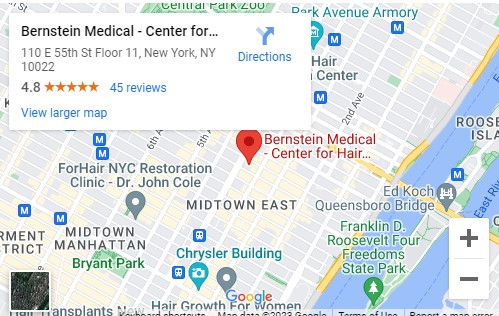March 19th, 2007
Q: I recall that you wrote an article about Monocryl for the donor closure in hair transplants. Why are you now using staples? — R.S., Park Slope, NY
A: I have been using staples in almost all of our follicular unit hair transplants since the beginning of 2006. Continue reading for the detailed explanation as to why I made the switch from sutures to staples.
March 16th, 2007
Q: Some surgeons are doing hair transplants using 5,000 to 6,000 grafts in a single surgery. Looking at the cases in your photo gallery, it seems like your hair transplants involve many fewer grafts per surgery. Do you do such large graft numbers in a single hair restoration procedure? — H.P., Cranston, R.I.
A: The goal in surgical hair restoration should be to achieve the best results using the least amount of donor hair (the patient’s permanent reserves) and not simply to transplant the most grafts in one session. In my opinion, although large sessions are very desirable, the recent obsession with extremely large numbers of grafts in one session is misplaced. The focus should be on results.
March 14th, 2007
Q: I am 26 and I have been diagnosed with Diffuse Unpatterned Alopecia (DUPA) and realize I am not a candidate for hair transplants. I have been on Propecia for about 9 months. There have been periods of increased shedding throughout and I am still shedding what seem to be mostly very fine, miniaturized hairs. Do you think this is the Propecia speeding up the hair cycle and pushing out the old fine hairs, or do you think this is an increase in the pace of my genetic balding? I know that your post states that the accelerated hair loss generally stops by the 6th month. Does DUPA have any effect on the timeframe? Also, I have read that Propecia is only effective for about 50% of patients with DUPA. Do you find that to be true, or have you found a different experience? — T.T., White Plains, N.Y.
A: It is hard to tell at 9 months whether it is shedding from the finasteride or that the medication is just not working. Since there is no way to tell, I would stay on the medication for 2 years for any possible shedding from the medication to have passed and to see if your hair loss actually stops.
March 13th, 2007
Q: I’m nervous about using the LaserComb alone and unmonitored. Can I have the HairMax treatment done at a clinic or doctors office?
A: The LaserComb is a home treatment.
March 12th, 2007
Q: I have been told I am a Norwood Class 6; will the HairMax LaserComb or other types of laser therapy work for me?
A: Laser treatments, as with other medical treatments for hair loss, only work when there is some existing hair in the area.
March 10th, 2007
Synopsis: In 1998, a group of hair restoration surgeons proposed a classification for follicular unit hair transplantation and mini-micrografting techniques, to improve communication between physicians and their patients. With recent advances in techniques, a number of new terms are being used that do not have clear definitions. This paper expresses the author’s opinions on which of these terms are useful and should be incorporated into the original classification and which are confusing and should be abandoned. The authors also suggest concise definitions for these new terms.
March 10th, 2007
Synopsis: Densitometry and video-microscopy are techniques that analyze the scalp under high-power magnification to give information on hair density, follicular unit composition and degree of miniaturization. They can be used to help evaluate a patient’s candidacy for hair transplantation and help predict future hair loss. The measurements will enable the physician to better estimate the size of the donor strip and anticipate the aesthetic outcome of the hair restoration procedure. This paper describes the value of these techniques in the hair transplant evaluation.
March 9th, 2007
Q: If I’m 20 years old and haven’t lost any hair yet, should I start using a laser comb now?
A: One should not treat hair loss until it actually occurs.
That said, once there is clear evidence that a person is thinning, non-surgical treatments are best started early to prevent further hair loss.
It is important to keep in mind that finasteride (Propecia) is still the most effective treatment for early hair loss and has a good record for at least some long-term effectiveness. It is not clear what additional benefit the laser-comb will have.
March 8th, 2007
Q: If I use the laser comb will I have to have hair transplants too someday?
A: If you are destined to have enough hair loss to require surgical hair restoration, it is unlikely that using any type of laser therapy will make a significant difference.
March 7th, 2007
Q: I want to use a laser comb and have already bought it. How soon after a hair transplant can I use it?
A: For the first ten days following a hair transplant you should not use the teeth on the laser comb, since it can dislodge the grafts. After this time it can be used normally.
Keep in mind, however, that as of now there are no published studies for this use.





